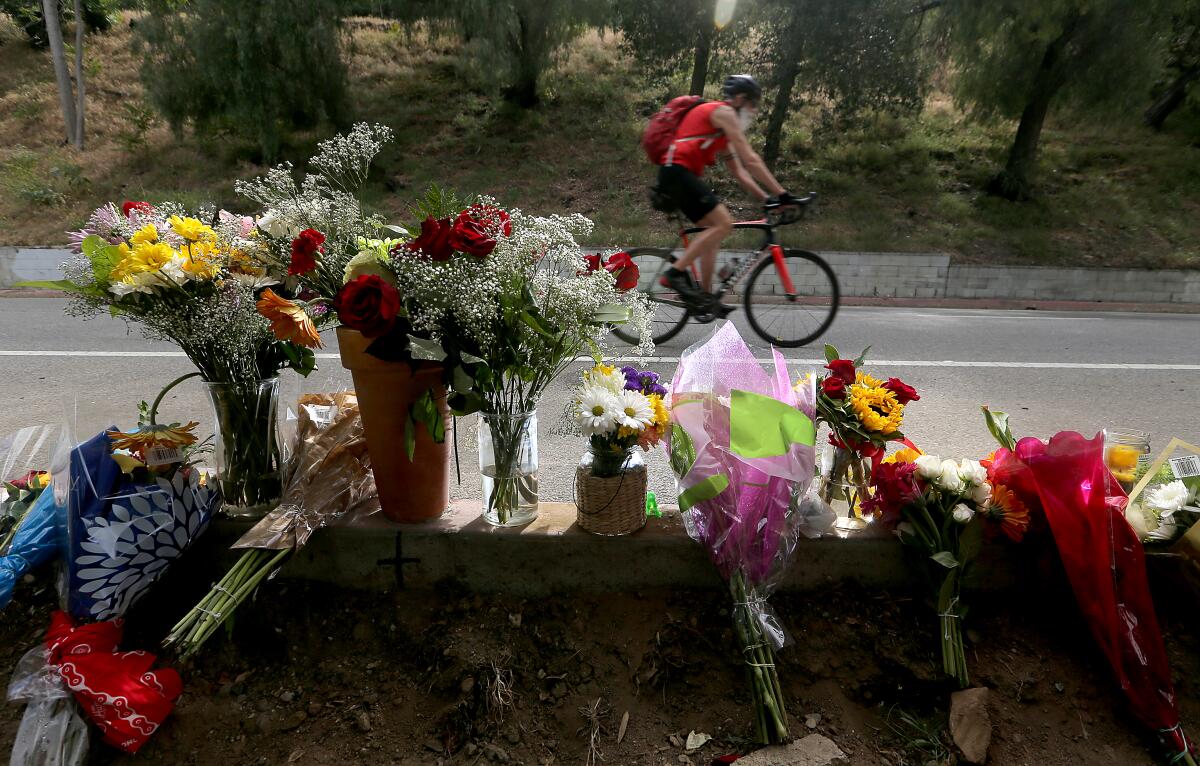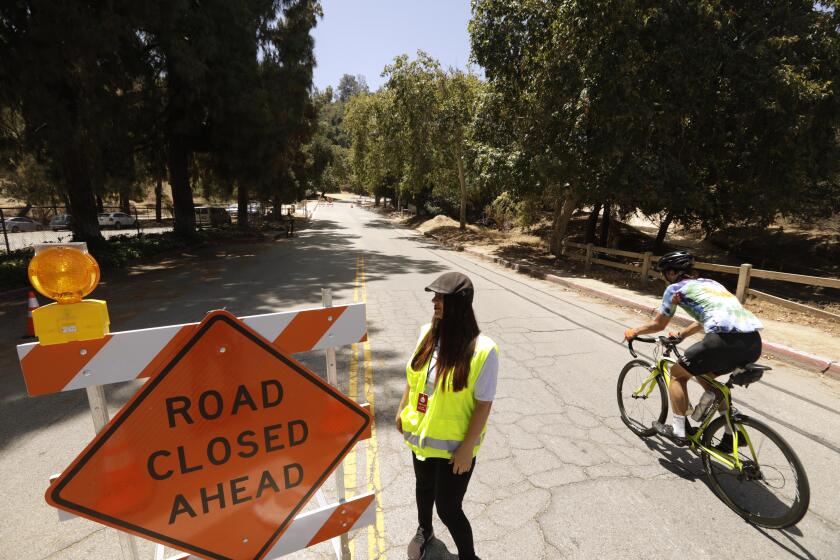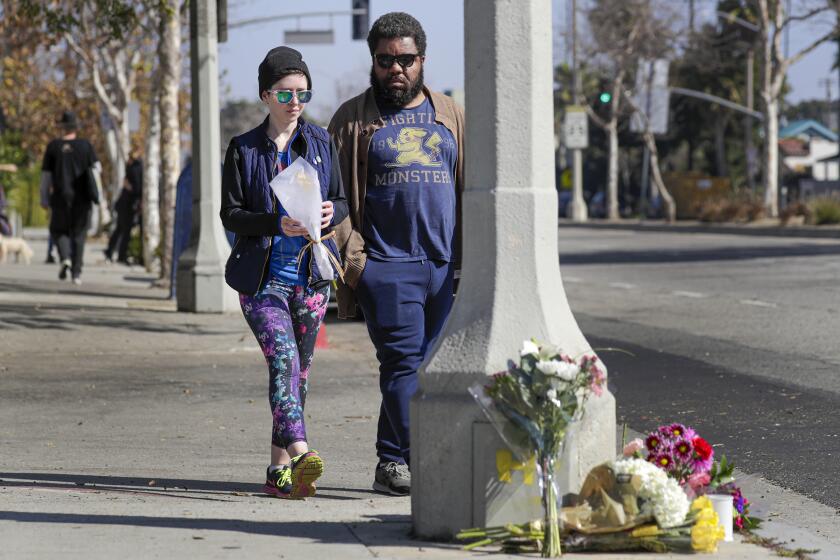Want to make L.A.’s biggest park safer and more enjoyable? Close more Griffith Park roads to cars

- Share via
In the early days of the COVID-19 pandemic, big cities across the country closed roads through major public parks to give people more space to bike, walk and recreate safely. And some of those cities, including San Francisco and Washington, D.C., found the closed routes were so popular and well used, they’ve continued to ban cars on certain park roads.
Now Los Angeles is testing road closures in the nation’s largest urban park, and it’s a most welcome experiment that should become permanent.
Last week, the city blocked a portion of Griffith Park Drive from Travel Town to Mt. Hollywood Drive to most cars to reduce speeding and cut-through traffic on a route shared by cyclists, equestrians and hikers. (Emergency and authorized vehicles can still use the street.) The closure is indefinite to see whether park users like it and to assess the impact on other park roads.
Los Angeles’ Griffith Park closed one of its main roads to traffic, the latest city to open a car-free zone for cyclists and pedestrians.
If the pilot project is a success (and it’s sure looks like it, based on early reviews,) then not only should L.A. keep the route closed, but the city should also block off even more roads in the park.
Griffith Park is an L.A. gem — a vast, natural landscape shared by people and wildlife, smack in the middle of a metropolis. It’s a beloved community asset, not a freeway bypass, and it’s high time the city prioritizes park users over commuters. That means slowing vehicle traffic and, in some areas, eliminating cars altogether.
Park officials have been considering how to make the roads safer for several years, including hiring a consultant to develop a plan to reduce cut-through traffic and slow speeding cars. The work took on new urgency this spring after cyclist Andrew Jelmert, 77, was killed on Crystal Springs Drive. Jelmert was nearing the finish of a 67-mile training ride when he was hit from behind by a driver, who police say was trying to pass another car and may have been drinking.
The park’s roads are currently designed for the movement of cars, not the safety and enjoyment of cyclists, walkers and equestrians. Drivers treat Griffith Park Drive and Crystal Springs Drive as shortcuts to avoid traffic on Interstate 5 and the 134 Freeway. The speed limit on park roads is 25 mph, but it’s routinely ignored by motorists. The routes aren’t safe for pedestrians or cyclists. Crosswalks and bike lane stripes are faded. Key roads are missing sidewalks for pedestrians and barriers separating cyclists from cars.
The entire transportation system, from road engineering to vehicle design, needs to be planned to avoid crashes and to reduce serious injury and death when crashes occur.
It’s no wonder Griffith Park mostly attracts only “strong and fearless” bicyclists, according to a consultant’s report. Councilmember Nithya Raman, who represents the area, said she wants the roads redesigned so families and kids feel comfortable riding their bikes in the park.
Besides the closure of Griffith Park Drive, officials are considering additional changes over the coming months, including restricting the hours that drivers can access park roads from the I-5 or 134 Freeway — to reduce cut-through traffic — and narrowing road lanes and installing raised crosswalks to slow speeding cars. Eventually, park managers may look to close freeway ramp access into the park altogether, turn the upper road of Crystal Springs Drive into a permanently car-free route and improve transit access so it’s easier for people to get to the park without a car.
The pandemic showed cities across the country what’s possible when they choose to reorient public spaces from cars to people. Park space is too precious to cede to motorists. While the first road closure is relatively small — less than a mile — it’s an important first step toward returning to the vision of benefactor Col. Griffith J. Griffith, a public park for the purposes of recreation, health and pleasure. Not a freeway bypass.
More to Read
A cure for the common opinion
Get thought-provoking perspectives with our weekly newsletter.
You may occasionally receive promotional content from the Los Angeles Times.











